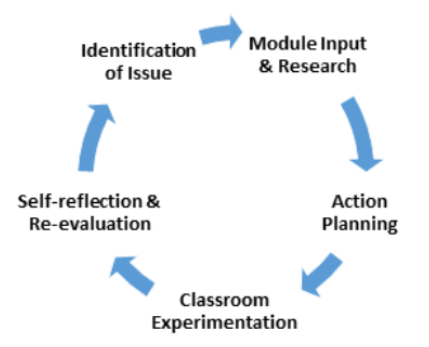Reflective practice
Professional educators seek to improve their skills and competencies systematically. They notice things about their teaching that they would like to improve, address one or two items on that list for development, and, once resolved, move onto another. They analyze both their practice and gaps in their knowledge as they go along, thinking consciously about what happens in their classrooms, and look to improve continually. Those needs and improvements may come from reading, action research, peer observation, observation or student feedback, or other sources, such as training sessions, but they must involve both input and experimentation in the classroom. This systematization of Professional Development (PD) is the essence of Reflective Practice: simply put, trying new things and accepting or rejecting them.
However useful training may be, it is often too random for the individualized development - primarily focused on input or workshops identified for a large faculty or determined by system needs: in other words, it may be useful to you, but if organized by institutions does not purposefully address your particular needs as a teacher: you may find useful ideas, but perhaps only by coincidence. Furthermore, there is not usually a formal requirement to try these practices out in your classes. To bridge the gap between theoretical input and classroom output, then, and to assist in your development as a Reflective Practitioner, we are asking you to keep track of personalized Action Points (APs) and integrate them into your classroom teaching during the year - a nudge to try out new ideas in response to gaps you've noticed yourself.
This document thus creates a virtue circle that links input to output, and to reflection, in a cycle that generates ongoing improvements in your teaching, as represented below:
PHASES OF REFLECTIVE PRACTICE
Reflective practices should be divided into two main phases.
